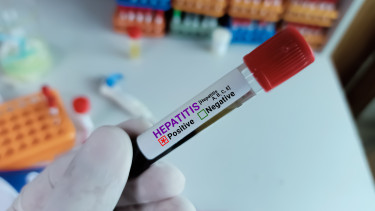COVID-19: Nearly 480 people in hospital, almost 1,200 new cases

The two charts below how August and September 2021 compare with August and September 2020 in terms of new COVID-19 cases and their accumulation. Oddly, there was a clear change in the trend in September (the turnaround came about on 28 August) when the number of new confirmed daily COVID-19 cases was a lot higher in 2020 than this year, unlike in August. Consequently, the curves showing the accumulation of daily figures also swapped places.

The 7-day averages also show the same pattern (left-hand chart). Fortunately, the 7-day average of Covid deaths is currently lower than a year ago, but the trend is not reassuring.

20 people diagnosed with COVID-19 died over the past three days which sent the 7-day rolling average up to 5.

Although there are fewer new confirmed daily cases than a year ago (1,183 vs. 2,814) and not as many people with COVID-19 are admitted in hospital wards (478 vs. 620), but those that need hospitalisation are generally in worse condition.
This is attested not only by the fact that a much higher number of people need mechanical ventilation (71 vs. 38 a year ago), but also by the ratio of these two figures.


On 26 September 2020, 5.8% of coronavirus patients in hospital had to be ventilated on a 3-day average, which compares with 14.3% now.

Even though vaccines were not in use a year ago and we have them now, the situation in terms of hospitalisation and ventilation should not be half as bad as it was last year. We can also hope that some cross-immunity exists to some degree at least, but with the new Delta variant and with this many people in hospital it might be a pipe dream.
The most likely explanation is that unvaccinated people make up the majority of severe cases, but authorities do not disclose the number or percentage of vaccinated and unvaccinated people among the infected / hospitalised / ventilated people.
Given that the cabinet relies almost exclusively on vaccines and has virtually no restriction in place that would mitigate Covid risks and help stem the spread of the more contagious Delta variant, it is incomprehensible why these numbers are not released. Provided they would prove that vaccines work and if you don't get inoculated against coronavirus, your chances are much higher of getting infected, having severe symptoms, needing hospitalisation and possibly ending up on tubes and then in the morgue.
Meanwhile, measures aimed at mitigating the spread of coronavirus are still not in place. It is basically up to people if they want to mitigate risks of transmitting the virus by social distancing, mask-wearing, etc. Whereas the number of cases has clearly been on the rise - although this is by far not the most important metric right now, as we mentioned above - auhorities have not tightened restrictions.

Over the weekend, about 35,000 tests yielded 1,183 positive cases, while 2,814 positive cases were detected in nearly 40,000 samples a year earlier. The positivity rate today is half of what we had a year ago: 3.34% vs. 7.09%.
The 3-day/21-day ratio of test positivity is down at 121%, while the 7-day average of the 3d/21d ratio is over 122%.


The 7-day average of Covid patients on ventilator per the number of them in hospital jumped to 12.9%. Interestingly enough, the number of active cases dropped by 210 over the weekend and so the 7-day average ratio of hospitalised patients to active cases rose further to 5.5%.

The four charts below show the absolute number of COVID-19 patients in hospitals and on ventilators (top two) as well as two ratios (COVID-19 cases in hospital / Active cases, and COVID-19 cases on ventilator / Cases in hospital, bottom two.) The left-hand charts depict a longer period (15 June - 26 Sept), while the right-hand ones show changes over a shorter period (25 July - 26 Sept). The ascending trend is clear as regards the number of people in hospital and on ventilator.


Vaccinations continue, with 3rd doses (available since 2 August) being much more 'popular' than 1st and 2nd doses combined.




Cover photo: MTI/Attila Balázs










